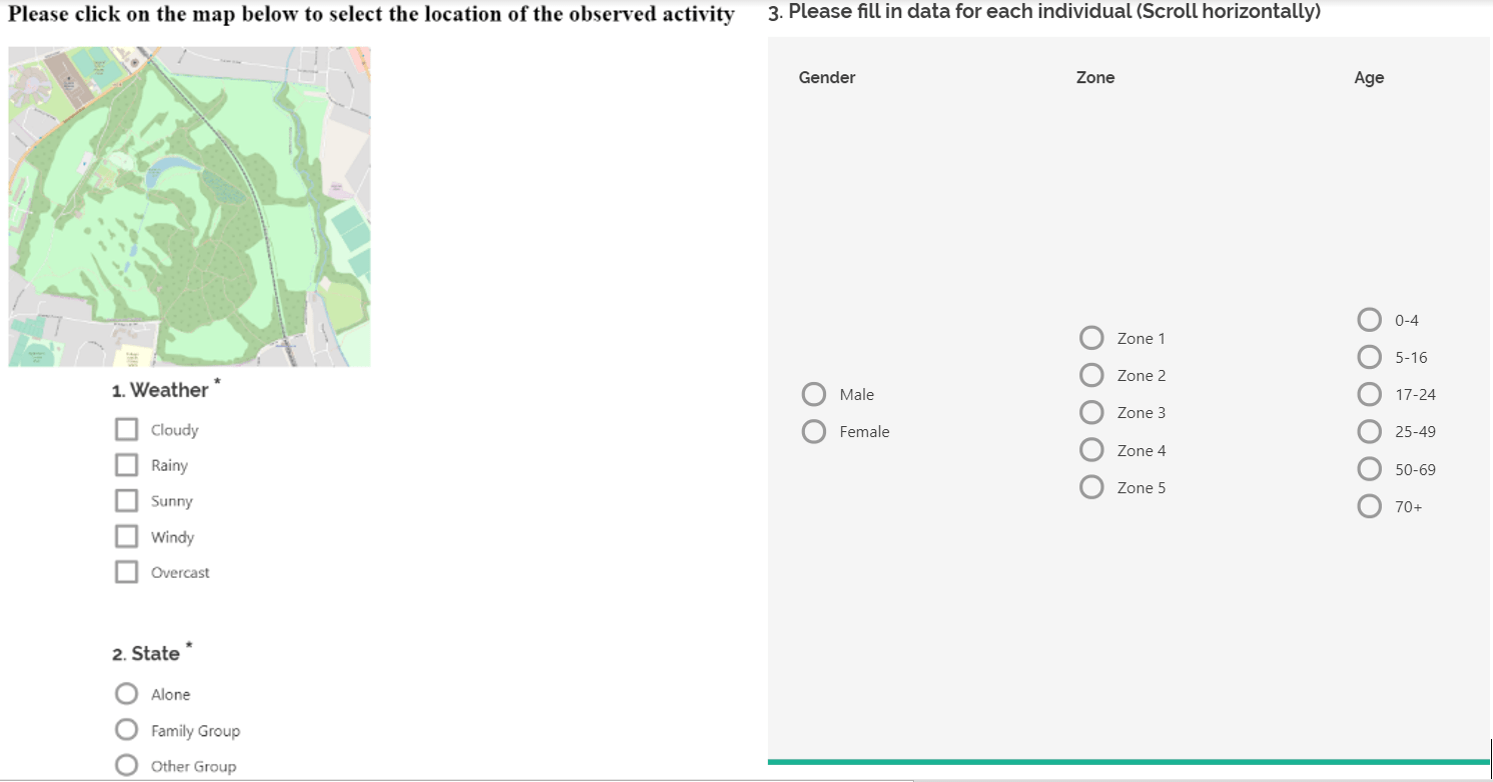Beckenham Place Park III
| Sponsor: | Lewisham Council |  |
| Sponsor Liaison: | Lucy Mitchell | |
| Student Team: | Brian Earl, Noah Goren, Connor Guyette, Revant Mahajan, John Trainor | |
| Abstract: | The goal of our project was to aid the Borough of Lewisham in the South of London with their ongoing regeneration of Beckenham Place Park. The project included focus on both the park itself as well as the River Ravensbourne flowing through its eastern side. We developed a web-based tool to aid in data collection, which gives users the ability to work offline and sync data to a master spreadsheet when online. We developed custom macros to conduct in-depth data analysis, which include tools to perform data significance tests to identify trends and patterns among park user’s survey responses. We also investigated river restoration case studies that were comparable to the River Ravensbourne project where we identified the best practices and lessons learned. | |
| Link: |
Beckenham Place Park III Final Report |
|
Executive Summary
Since 2016, the WPI London Project Center has assisted the Lewisham Council with various aspects of the regeneration of Beckenham Place Park. Building on a previous evaluation of Beckenham Place Park that was conducted in 2018 (Flores et. al, 2018), the goal of our project was to aid the Lewisham Council in planning further restoration efforts with a special emphasis on the eastern portion of the park and the River Ravensbourne. We identified the following objectives:
Objective 1: Assess public opinions about Beckenham Place Park.
Objective 2: Streamline the data collection process.
Objective 3: Identify best practices for the restoration of the River Ravensbourne.
We performed a detailed analysis of the data collected in 2018 to determine public opinion on recent and ongoing restoration efforts. Due to time constraints, the results of the 2018 team’s analysis were presented mostly in the form of summary statistics, simple bar graphs and pie charts. Our analysis of this data consisted primarily of testing for significant differences in responses based on different groups of visitors.
The Beckenham Place Park survey and observational sheets featured several different types of responses. Among these were multiple-choice responses, check-all-that-apply (CATA) responses and ranking responses. Using Visual Basic and Microsoft Excel, we developed a series of data analysis tools, which can be used with very little expertise with either Microsoft Excel or statistics. The tools automate the Chi-squared and Kruskal-Wallis tests, thereby streamlining the data analysis process. The tools were used to test for significance and make connections between different groups of visitors and their responses. When applied to the 2018 survey and observational data, the tools showed that factors such as age, gender, ethnicity, and location in the park significantly affected public opinion and behaviors. We determined, for example, that older visitors (aged 50 and older) have a significantly better understanding of the park’s heritage than younger. Likewise, we determined that children and families tend to visit parks the most on Sunday afternoons and spend their time in the playground area. We delivered the tools to the Lewisham Council for future usage, along with a user guide (Trainor, 2020, Data Analysis Tools User Guide) on how to implement and use them.
In addition to data analysis, data collection was a key component of our project. We aimed to streamline the process of data collection through the standardization of the tools used. The two major data collection tasks for ongoing evaluation efforts of Beckenham Place Park are conducting surveys and observational studies. Previously, observational studies were conducted using physical observational sheets or QuickTap surveys. The data from this then had to be manually ported over to a master database. This data collection tool and methodology had several shortcomings like redundant data entry, missing metadata that we wanted to resolve. From our conversations with Lucy Mitchell and our own analysis of the observational study conducted in the previous IQP, we determined and implemented the following design criteria for the observational sheet:
• Simultaneous multi-user usability
• Quick and easy to fill out
• Usable on mobile phones and tablets
• Operational both online and offline
• Precise location mapping
• Ability to export data to an Excel sheet
Taking all these considerations into account, we built a web tool for the observational sheet that can record data offline. The web page only needs to be loaded once on the device to be used. Since it is a web tool, multiple users can access it at the same time on their phones and tablets. It includes an interactive map to determine geographical location, as well as the questions from the observation sheets. The survey can be filled out by selecting checkboxes and filling out the text boxes. The complete button at the end verifies all the required data fields are filled out.
Figure ES1: Observational Tool
The final portion of our project included researching relevant case studies of projects that reflect the attributes the Lewisham Council is looking for in the Beckenham Place Park restoration. These case studies were chosen to reflect a range of size and complexity, but all the projects had similar goals as the BPP restoration. The similarities and differences among the case studies were tabulated, and we reported how they addressed similar challenges faced in the BPP restoration effort. Additionally, the restoration experts we contacted provided information on projects they have worked on in the past.
Figure ES2: Locations of the six case studies
Table ES1: River Restoration Attributes
Some of the desired outcomes for the Beckenham Place Park River Ravensbourne project include developing effective flood mitigation, preserving natural scenery and biodiversity, creating a visually appealing and functional space for the public, etc. We found that the most prominent aspects throughout the case studies we reviewed were public involvement, flood mitigation, aesthetic enhancement, and naturalization improvements.
In cases such as Ladywell Fields, the River Skerne, and the River Brent, we saw different ways in how people perceived the park purely from its look and welcoming features. In Ladywell Fields, the river was moved to the park’s center to become more of a focal point within the park. At the River Skerne, new flora was introduced to improve the aesthetics of the area, resulting in a 40% increase in visitation rates and a 90% increase in the public’s perception of visual appeal of the scenery. Public engagement is also a key consideration for the restoration at BPP. The River Brent, which runs through Tokyngton Park, the Borough of Brent, also had a focus on community engagement. They surveyed the public on what they would like to see done within the park and they were physically able to connect two disconnected communities before the restoration of the river.





